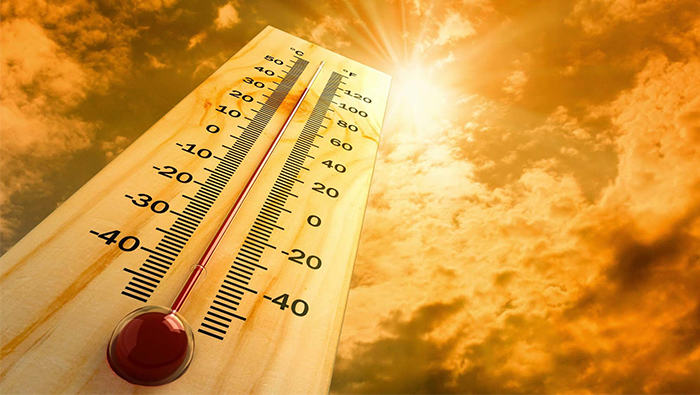

Many cities get unbearably hot in summer due to dense development, concrete, a lack of greenery and rising temperatures. Could cold air corridors help cool them down?
ities are prone to heating up in summer. Concrete and asphalt store the sun's heat for a long time, keeping metropolises hot long into the night.
Because temperatures above 20 degrees Celsius (68 degrees Fahrenheit) are more likely to interfere with sleep, cooling cities in the face of our changing climate is an issue of increasing importance.
That's where cold air corridors come into their own.
What are cold air corridors?
Beyond the heat of the metropolis, the surrounding countryside remains significantly cooler, especially at night. On a cloudless summer evening, it can be up to 15 degrees fresher outside the city limits.
Green strips, rivers, lakes, railway lines and wide tree-lined streets can act as corridors through which the colder outskirts air flows into sultry city centers.
But because cold air is heavier than warm, and flows only a few centimeters above the ground, it can easily be impeded by obstructions such as buildings.
So when designing cities, these corridors should be kept as free as possible.
Why does colder air develop in the surrounding countryside at night?
Beyond the city there is less concrete and asphalt and more earth, trees and grasses that store much less of the sun's heat into the night.
Cool air is further created by the evaporation of water through the leaves of abundant plants in rural areas.
A cloudless night sky also helps to cool grasslands, woodlands, orchards, and the sand, clay and peat soils that retain little heat after dark.
Getting more cold air into the city
Topography is also important. Heavier cold air that collects directly above the ground can flow with great force down a mountain or hillside and create a cooling wind.
Cities flanked by a mountainside or located in a valley can benefit greatly from this cold air when it flows into urban centers and displaces into warm air rising upwards while reducing temperatures in streets and buildings.
The southern German city of Stuttgart, for example, is located in a valley and works to preserve its cold air corridors that act as a local ventilation system.
These corridors are therefore taken into account when planning urban development and new building projects in the city.
What can cities do?
The importance of cold air from surrounding areas for cooling cities is being increasingly recognized across German urban centers, in addition to major international cities such as New Delhi, Lima, Lagos, Seoul, Melbourne and Portland.
These metropolises are commissioning environmental meteorologists to measure temperatures and wind currents at various locations in and around the city to create a detailed climate atlas.
On the basis of this data, cities can stop building on fresh air corridors, decide to improve them, or to protect and strengthen natural cooling in the surrounding area.
Cities can take further measures to significantly reduce extreme heat in cities and improve the quality of life.
These include unsealing concrete or asphalt surfaces, planting trees along streets, limiting combustion engines that produce significant waste heat, greening roofs and building facades, shading, and creating more parks and water features.